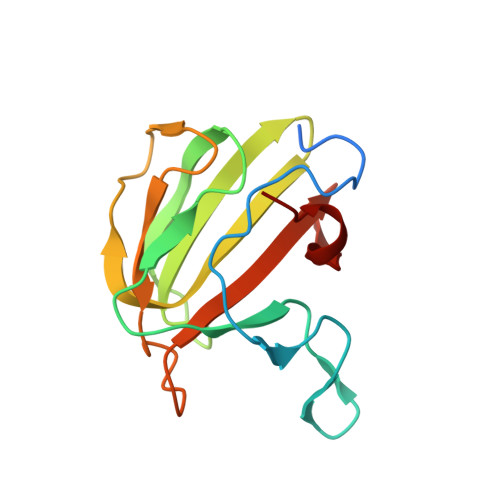Structure-Function Analysis of the Lytm Domain of Envc, an Activator of Cell Wall Remodeling at the Escherichia Coli Division Site.
Peters, N.T., Morlot, C., Yang, D.C., Uehara, T., Vernet, T., Bernhardt, T.G.(2013) Mol Microbiol 89: 690
- PubMed: 23796240
- DOI: https://doi.org/10.1111/mmi.12304
- Primary Citation of Related Structures:
4BH5 - PubMed Abstract:
Proteins with LytM (Peptidase_M23) domains are broadly distributed in bacteria and have been implicated in a variety of important processes, including cell division and cell-shape determination. Most LytM-like proteins that have been structurally and/or biochemically characterized are metallo-endopeptidases that cleave cross-links in the peptidoglycan (PG) cell wall matrix. Notable exceptions are the Escherichia coli cell division proteins EnvC and NlpD. These LytM factors are not hydrolases themselves, but instead serve as activators that stimulate PG cleavage by target enzymes called amidases to promote cell separation. Here we report the structure of the LytM domain from EnvC, the first structure of a LytM factor implicated in the regulation of PG hydrolysis. As expected, the fold is highly similar to that of other LytM proteins. However, consistent with its role as a regulator, the active-site region is degenerate and lacks a catalytic metal ion. Importantly, genetic analysis indicates that residues in and around this degenerate active site are critical for amidase activation in vivo and in vitro. Thus, in the regulatory LytM factors, the apparent substrate binding pocket conserved in active metallo-endopeptidases has been adapted to control PG hydrolysis by another set of enzymes.
Organizational Affiliation:
Department of Microbiology and Immunobiology, Harvard Medical School, 200 Longwood Avenue, Boston, MA 02115, USA.


















